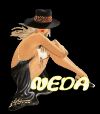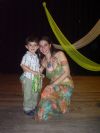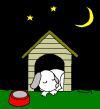|
ESL Forum:
Techniques and methods
in Language Teaching
Games, activities
and teaching ideas
Grammar and
Linguistics
Teaching material
Concerning
worksheets
Concerning
powerpoints
Concerning online
exercises
Make suggestions,
report errors
Ask for help
Message board
|
ESL forum >
Ask for help > help with young learners!
help with young learners!
|

Neda

|
help with young learners!
|
Hello people!
Thanks Victor for the enormous efforts you are doing to keep the site working, I need the forum..
Let me tell you my situation I�m teaching children of 6 and 7 years old and they �re learning the difference between "a and an" it�s so difficult to tell them the difference, cause they �ve just learned the capital letters and the whole alphabet. Can anyone of you help me? What can I do to help them to understand this topic?
Well, many thanks in advance....
Regards.
Neda |
14 Sep 2008
|
|
|
|

miss_alejandra

|
|
hi Neda, I have just taught the a/ an article to my little students, and let me tell you it was a challenge but at the end, it all came up well, first of all I introduce 4 sentences, if necessary, translate them into 1. 2 of them show the "male" and "female" meaning of a: e.g. This/ it is a book. // This/it is a pencil case.
And then I add the other two left with "an", following the same method:
This/it is an eraser.// This/It is an umbrella. That is for making them aware that they�re used in both cases.
I translate them as well underlining in both cases a and an articles .
After that I ask them to look at them carefully, what�s the difference? after a few minutes, some of the kids will notice the diffference and that�s when you intervene making them notice that it is used in singular, what their meanings are and that (I say this: "las vocales no deben chocar", entonces a "a" le agregamos la n, "an"). for the cases where vowels are in initial position for nouns.
well I hope It helps good luck! |
15 Sep 2008
|
|
|

emstacks

|
yes i think the main thing to concentrate on is that "an" goes in front of a vowel.
look at matching activities and things like go fish with item cards - do you have a pencil, do you have an orange ....
|
15 Sep 2008
|
|
|

Zora

|
|
Yup, definately... focus on the vowel consonant rule, even if you have to teach the kids which letter are the vowels - there are only really 5 in the English language. It�s tons easier if you do it that way... |
15 Sep 2008
|
|
|

Vickiii

|
Possibly make some jigsaw pieces with a/an and some target nouns. If you make them on jigsaw pieces you can continue to grow your collection so the kids can make sentences out of them. I just use a universal jigsaw piece so that the children can join any two pieces together. I write the same word on both sides, one long ways and one width ways.
As we grow our vocabulary we also grow our jigsaw collection, the children can use the jigsaw puzzle pieces to make sentences or poems or to have sentence races (always a lot of fun).
If you like this idea I suggest that you use a different colour card for each type of word. For example:
noun = red
preposition = blue
verb = green
This is handy as the children progress with their English and vocabulary.
You can even add parts of words - ing and ed. This is great for regular verbs. With irregular verbs I colour a border around the edge of the jigsaw piece so the children know to search for the past tense.
I only have a hand drawn template for these jigsaw pieces. If you want it though let me know and I can scan and email - or even make it on the computer for universal use!
One idea that works well with a/an as well as many other grammatical rules.
I hope you enjoy this.
|
16 Sep 2008
|
|
|

Neda

|
|
Thanks for all the ideas!
|
17 Sep 2008
|
|
|